June 6, 2024 is D-Day’s 80th anniversary; but what makes D-Day so important? Why does it deserve proper acknowledgement?
In the military, D-Day is the day on which an assault is initiated. While this D-Day (also known as Operation Neptune) was not the only “D-Day” of WWII, nor is the term specific to that conflict, it was the most impactful. On June 6, 1944, the Allies combined their air, sea, and land forces in an invasion of Nazi-occupied Normandy, France. The war didn’t end upon this invasion, but the Allies would not have won without it—the success of the invasion opened Europe to the Allies, resulting in Germany’s surrender less than a year later.
Besides the fact that the invasion was a catalyst to the eventual success of the Allies over Germany, D-Day also deserves recognition for being the largest seaborne invasion in history and for being perhaps the most intricately planned military operation in history as well. In a way, it’s a story of underdog success; the stakes were so high and the impact was so Herculean that it almost seems unreal.
If you’d like to learn more about D-Day, or if you’d like to celebrate its anniversary accordingly, here is a list of 11 books you can read for D-Day’s 80th anniversary.
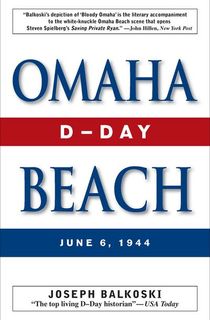
Omaha Beach
Omaha Beach, out of all the beaches stormed on D-Day, was the most difficult beach to take as it was the most heavily defended and the most difficult to scale—thus, it resulted in the most casualties. Joseph Balkoski’s book Omaha Beach is a foundational text about the fighting done on Omaha Beach. Using personal recollections of soldiers along with historical narrative and analysis of the actual invasion as it progressed, Balkoski gives readers a vivid inside look into that particular battle and its larger significance.
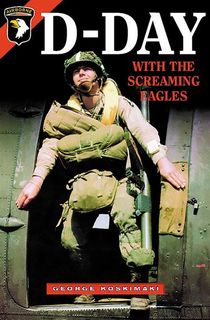
D-Day with the Screaming Eagles
D-Day with the Screaming Eagles is full of primary source material focused mostly on the 101st Airborne Division and their experiences in the air. Eyewitness details come from every level: division command personnel, regimental, battalion, company, and battery commanders, chaplains, surgeons, enlisted medics, platoon sergeants, squad leaders, and even soldiers who, after a badly scattered drop, adapted quickly to a new group.
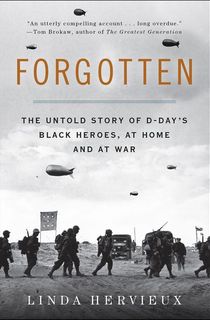
Forgotten
The 1940s were a tumultuous time for Black Americans, with both World War II raging abroad and Jim Crow laws at home. But D-Day owes part of its success to the 320th Barrage Balloon Battalion, a unit of Black soldiers who were tasked with manning a curtain of armed balloons to deter enemy warcraft. Linda Hervieux features newly uncovered military records and dozens of original interviews with members of the battalion and their surviving family members to discuss the intersection between military and social history.
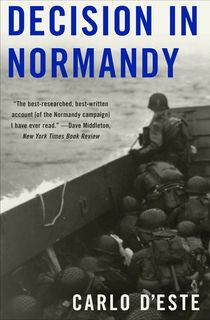
Decision in Normandy
A more chronological overview of the strategic planning that went into D-Day, Carlo D’Este's book draws on declassified documents, personal interviews, diaries, photos, maps, and first-hand accounts to trace the road to victory and all the battles in between. Readers delve into what went right, what went wrong, and a comprehensive lesson in the military strategy utilized starting from the moment Prime Minister Churchill proposed the idea of an invasion of Normandy, all the way to the last battles of WWII.

D-Day Through French Eyes
Shedding light on D-Day from a whole different perspective, D-Day Through French Eyes does exactly what the title proposes: it tells the story of Normandy’s invasion from the perspective of French civilians. Using first-hand accounts by French citizens throughout the Nazi-occupied region, Mary Louise Roberts shows us that though the French wanted liberation, they had to brace themselves for war regardless—and that their contributions to the war effort, though small, were mighty, and should not be ignored.
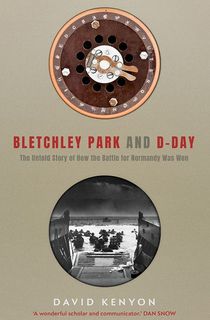
Bletchley Park and D-Day
Bletchley Park is an English country house and estate that was once used as the principal center for the Allies’ code-breaking team during WWII. Though the secret of Bletchley Park wasn’t unveiled until the 1970s, David Kenyon uses previously classified documents to describe the invaluable impact of Bletchley’s contribution, including how the preparations for Normandy’s invasion began years earlier at Bletchley Park.
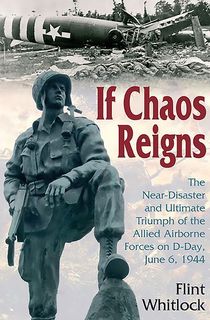
If Chaos Reigns
Flint Whitlock’s If Chaos Reigns is named after the address of Brigadier S. James Hill to his troops before the launching of Operation Overlord: “Gentlemen, do not be daunted if chaos reigns; it undoubtedly will.” This account gives readers another unique D-Day perspective. Concentrating exclusively on American, Canadian, and British air forces that descended upon Normandy in the pre-dawn hours of D-Day, readers learn about what that fateful day was like; details of the formation, recruitment, training, and deployment of the Allies’ parachute and glider troops; and more key facts.
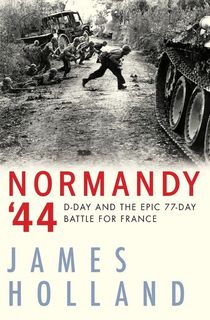
Normandy '44
As previously mentioned, D-Day was more intricately planned than almost any other military operation in history—and it had to be. Combining both archives and testimonies from eye-witnesses, James Holland discusses the intricate planning that ultimately led to the Allies’ success: how hundreds of thousands of men and all their equipment made it across the English Channel; the landings, subsequent battles, and casualties; and the strategic decisions of the commanders.

A Bomber Crew Mystery
When author David Price discovered a discarded trophy in an Edinburgh antique shop, he knew it was up to him to tell the story of the names engraved on it. A Bomber Crew Mystery focuses specifically on the members of the 388th Bombardment Group, whose very first mission flew out on D-Day, and who participated in over 30 perilous missions during August and September of 1944, earning them the title, “Outstanding Crew of the Month.” Price provides a detailed account of their wartime efforts, contributing details from interviews with the veterans and their family members—and he reunited them with the trophy that they won in the midst of it.
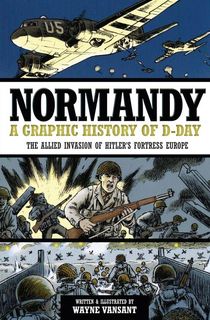
Normandy: A Graphic History of D-Day
A powerful graphic novel, Wayne Vansant tells the story of the planning and execution of Operation Overlord from D-Day on June 6, 1944, to the liberation of Paris on August 25, 1944. Included within these pages are vibrant depictions of the Allies’ capture of Cherbourg, the breakout of Patton’s Third Army, the defeat of the Axis forces in the Falaise Pocket, and more.

My Longest Night
My Longest Night is a poignant first-hand account by Genevieve Duboscq, a French civilian who was 11 years old on D-Day. Because her small Normandy town had remained mostly untouched by war all this time, it was more than surprising when an American paratrooper arrived on her family’s doorstep on June 5th, 1944, with other battered emissaries of war, and turned their home into an emergency shelter. Her family’s knowledge of the region, making the difference between life and death, success and failure, proves just how impactful civilian efforts were on the war.
Sources: Eisenhower Library and DDay.org
This post is sponsored by Open Road Media. Thank you for supporting our partners, who make it possible for The Archive to continue publishing the history stories you love.
